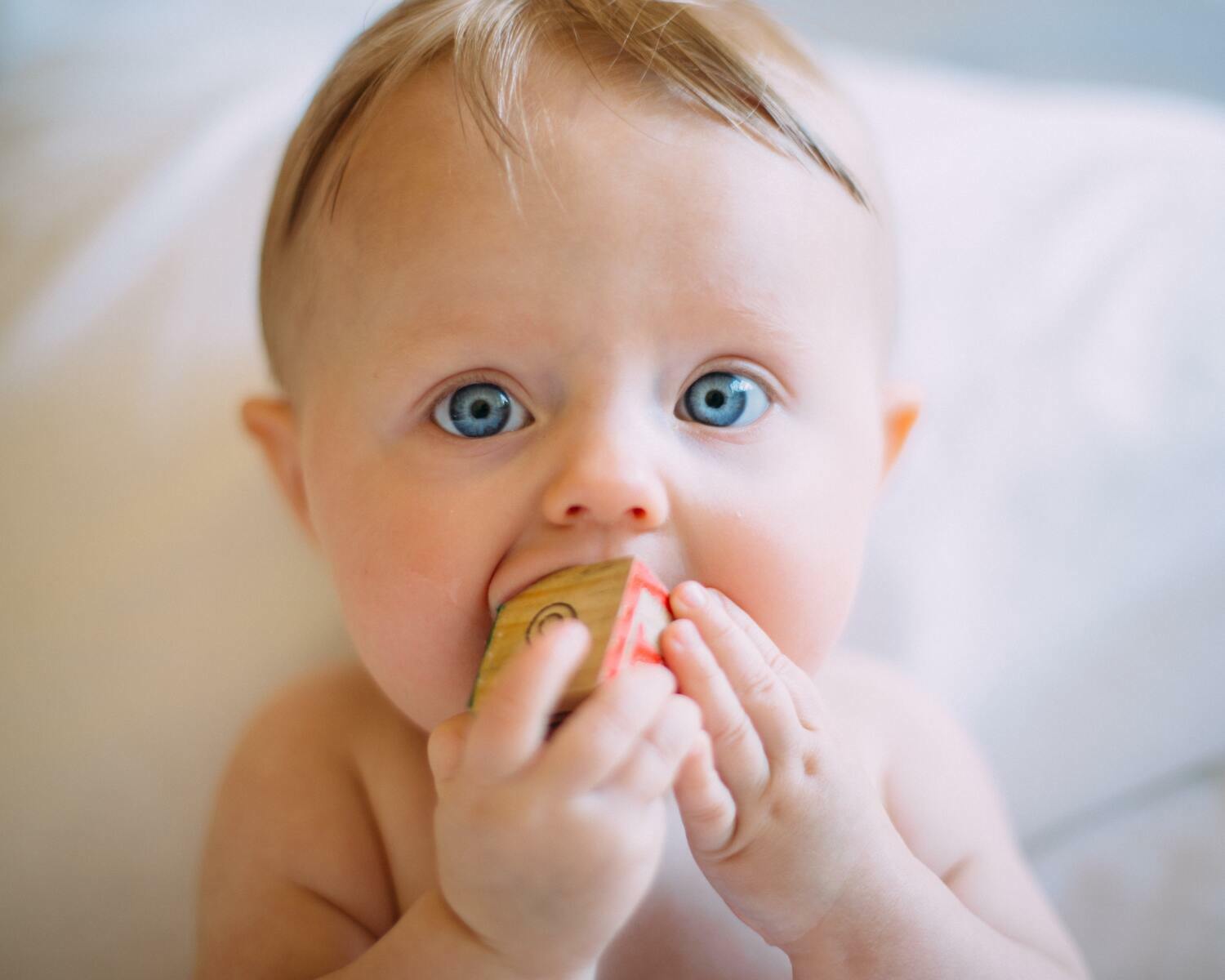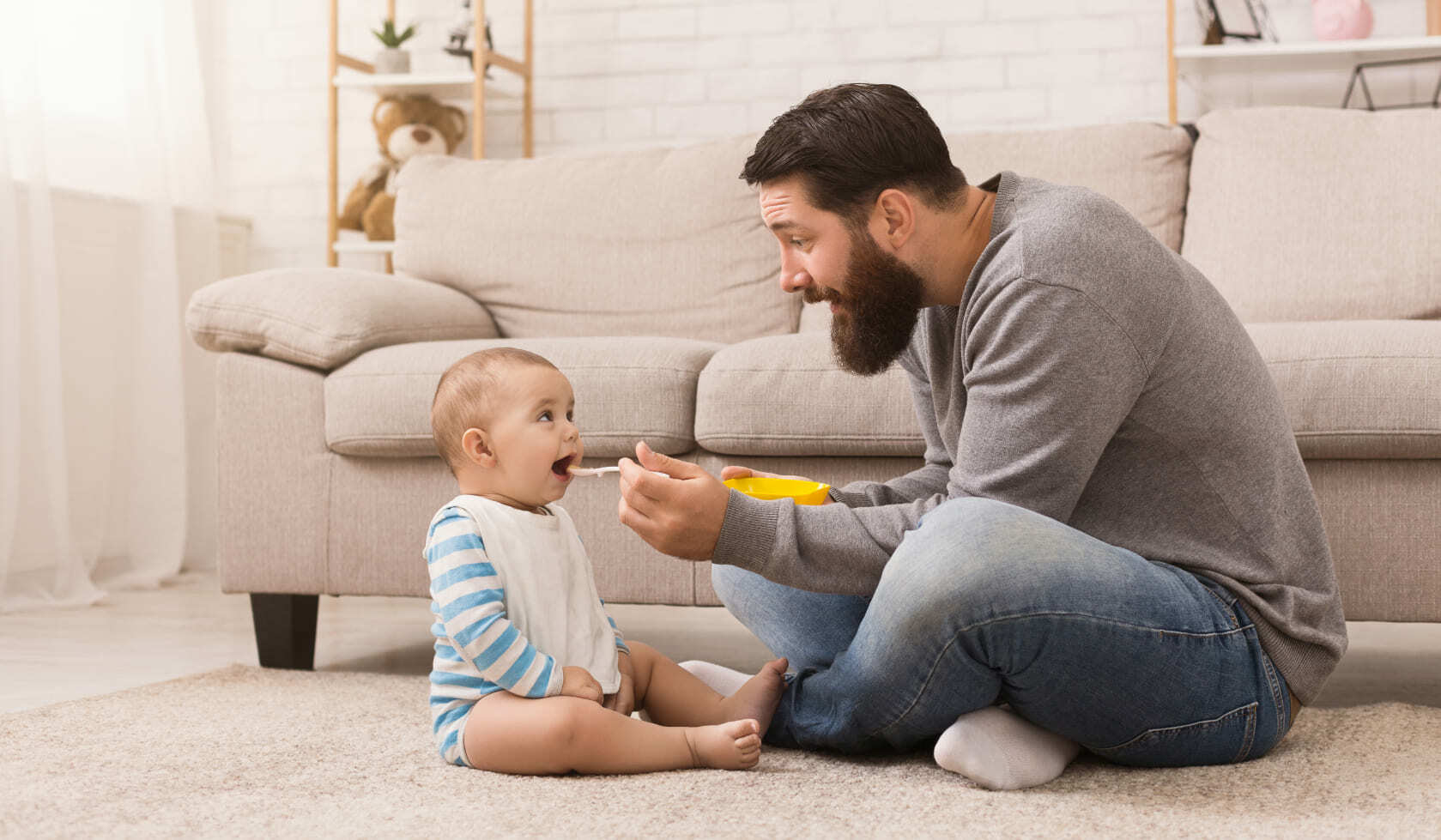Ways to help ease teething pain
Those first teeth, yet another milestone, but it isn’t always easy to see your child in pain. We give you 5 tip to ease teething pain.
Written by Ine De Bruycker, preverbal speech therapist at ReminCare

As a parent, you sometimes feel powerless if you notice your child is experiencing teething pains. It's a phase you have to go through, but can you make the pain more bearable for your child?
How can I tell when my baby experiences teething discomfort?
Babies get their first teeth on average between the ages of 8 and 12 months, starting with the central incisors. Usually the lower teeth appear first, followed by the upper teeth, but this can vary. The central incisors are followed by the lateral incisors, the first molars, the canines, and so on. The entire process is usually completed between the ages of 24 and 30 months.
You may have noticed in the last few days your baby started chewing more on his toys or fingers. Drooling may also increase over a period of time. When you feel your baby's gums, you may notice it feels hard. This is the baby's baby tooth making its way through, which is currently causing your baby problems. When the teeth start coming through, your baby may experience an itching sensation and pain in the gums. This can make your baby restless, more likely to cry and wanting to be comforted. Sleeping is also often more difficult. Sometimes your baby could get a fever and suffer from diarrhoea. This is a result of the reduced appetite which causes dehydration and sometimes also diarrhoea. Once the tooth has come through (which may be preceded by a pale-looking gum or redness), the symptoms should disappear again.
5 tips to ease the pain
There are two main things that can take away some of the discomfort of teething. These are cold and tactile stimulation, meaning touch. Both help to reduce the pain stimulus that the new tooth sends to the brain. Cold and touch can be used in different ways.
Give your baby fresh fruit puree or apple sauce:
If your baby is currently eating porridge and purees, you can make him/her happy with fresh fruit puree or apple sauce. If your child can already eat bits and pieces, why not give them fresh raspberries? Is your child over one year old? Then you can also give them cold yoghurt. Look for fresh alternatives, but always bear in mind motoric mouth development and dietary guidelines.
Give crunchy foods (when your child is orally and motorically ready):
From 6 to 7 months onwards, you can use maize or carrot puffs, for example. They are shaped like cheesy chips but are specifically made for babies. They melt in the mouth but it can be fun for your child to munch on them. You can find them in most supermarkets nowadays. When your child is older, you can try other types of food with a rougher texture.
Give your baby cold objects to munch on:
This could be a teething ring or, for example, a clean washcloth that you put in the fridge after making it a bit wet. Your baby can chew on it and the cold will reduce the infection of the gums. Be careful not to put the items in the freezer! Things that are too cold can cause burns.
Massage your child's gums with your finger:
To relieve the pain, rub your finger very lightly on the gums where the new tooth will emerge. Do this in circular motions. If you prefer not to do this with your bare finger, you can also use a silicone finger toothbrush. This is also known as a baby toothbrush. At the same time, your baby will be introduced to the sensation of having their teeth brushed. You can put the toothbrush in the fridge for a while before you start. In that way you have the benefit of both tactile stimulation and cold!
Follow your child’s signals:
Does your child need more attention today? Give it to him. Cuddles are still the best medicine to relieve your baby's pain. Put the two of you in a quiet place and enjoy that moment of rest.
Do you have the impression that your baby wants to drink more breast milk and is not interested in other types of food? Perfectly ok. A few days on a different rhythm is completely normal at this point. More breastfeeding will also mean less risk of dehydration and therefore less problems with diarrhoea or red bums.
Know that when your baby is bothered by teething, this is temporary and the pain will pass relatively quickly. Hopefully, in the meantime, these tips will bring your baby and yourself some comfort.
